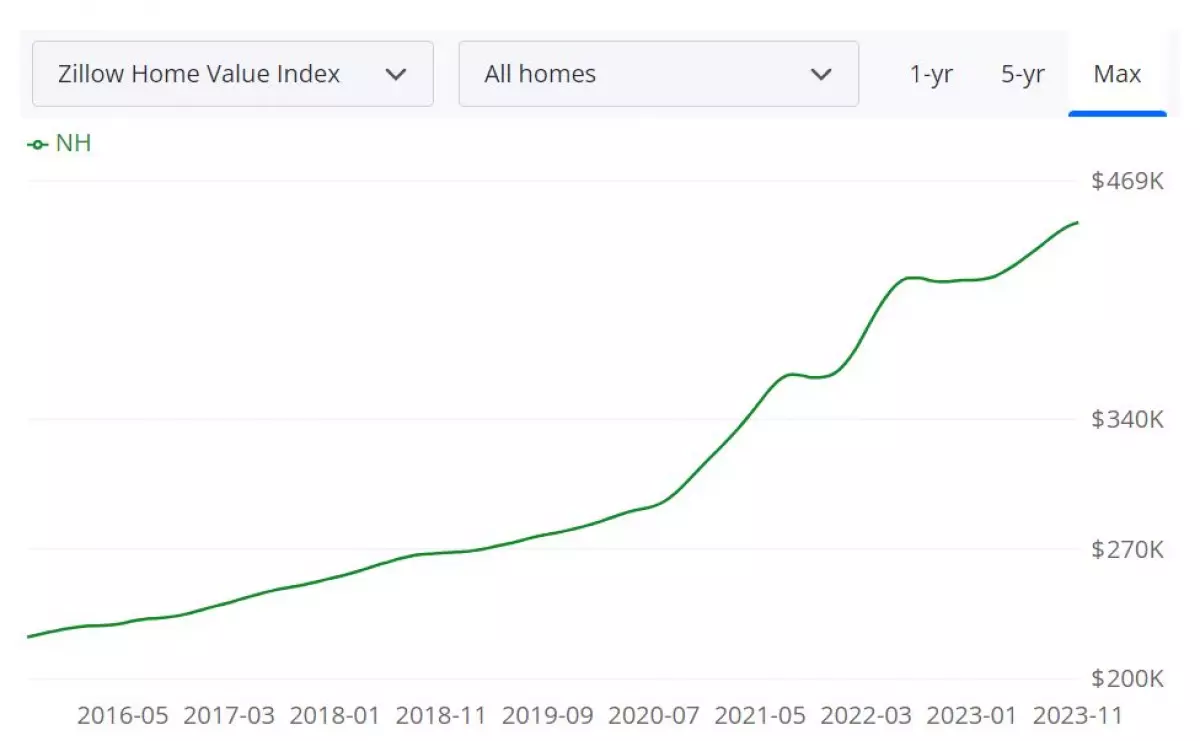The New Hampshire housing market is experiencing a significant shift in dynamics, with sellers currently holding the upper hand in negotiations. This seller's market is characterized by a decline in single-family residential sales, high median prices, and limited inventory. However, these trends present challenges for potential homebuyers seeking affordability in the market.
How is the New Hampshire housing market doing currently?
According to the New Hampshire Association of Realtors (NHAR), the state is currently on track to witness the lowest number of single-family residential housing sales since 2012. This downward trend has persisted, with November 2022 experiencing a 5.5 percent decline in sales compared to the previous year. In fact, this marks the 29th consecutive month of year-over-year decreases in single-family residential sales within the state.
Affordability Challenges
The primary factor contributing to this decline in housing activity is the issue of affordability. The prices of single-family homes reached an all-time high of $450,000 in November, reflecting a 3.4 percent increase from the previous year. New Hampshire has now witnessed 45 consecutive months of year-over-year median price increases, posing a considerable challenge for potential homebuyers.
The Affordability Index, a key metric gauging the feasibility of homeownership, stands at 64. This index signifies that the state's median household income is only 64 percent of what is necessary to qualify for the median-priced home under prevailing interest rates. This marks a 7.2 percent decrease from the previous year and a staggering 40 percent drop from November 2021 when the index was 106. To provide context, the Affordability Index for residential housing in the state reached as high as 220 in February 2012.
Inventory Insights
Another crucial aspect influencing the housing market is the inventory. As of November, the inventory stood at 1,775, reflecting a 3 percent decrease from November 2022. This limited supply has resulted in a months' supply of 1.8 in New Hampshire, considerably lower than the national average of 3.6. The national benchmark for a balanced market is 6-7 months, emphasizing the current scarcity of available homes in the state.
Is It a Buyer's or Seller's Housing Market?
In the current scenario, the New Hampshire housing market leans heavily towards being a seller's market. The persistent decline in single-family residential sales, coupled with high median prices and limited inventory, creates an environment where sellers have the upper hand in negotiations.
Is Now a Good Time to Buy a House in New Hampshire?
The decision to buy a house in New Hampshire depends on individual circumstances. For buyers, the current market poses challenges due to high prices and limited inventory. However, for sellers, it presents an opportune time to capitalize on the demand and favorable conditions.
New Hampshire Housing Market Forecast 2024
According to Zillow, the average home value in New Hampshire stands at an impressive $447,215, indicating a significant 7.7% increase over the past year. Homes in the state go pending in approximately 9 days, emphasizing the speed and competitiveness of the market. These figures, observed through November 30, 2023, offer a snapshot of the current state of the housing market in New Hampshire.
Key Metrics and Indicators
- Inventory and New Listings: As of November 30, 2023, the state boasts 2,909 homes for sale, accompanied by 1,294 new listings during the same period. These figures provide insights into the availability of homes and the ongoing activity in the market.
- Sale Prices: The median sale price, recorded as of October 31, 2023, is $440,000, with a median list price of $464,667 as of November 30, 2023. These metrics shed light on the pricing dynamics within the New Hampshire housing market.
- Sale-to-List Ratio: The sale-to-list ratio, standing at 1.006 as of October 31, 2023, signifies the relationship between the listed and actual sale prices. This ratio provides valuable insights into negotiation trends within the market.
- Market Dynamics: Notably, 59.4% of sales in October 31, 2023, were over the list price, while 30.2% were under the list price. These percentages indicate the competitive nature of the market, with a significant portion of sales exceeding the listed prices.
Regional Housing Forecast in New Hampshire
Examining the regional forecast for various areas in New Hampshire provides a nuanced perspective on the expected market performance. The forecast, extending up to November 30, 2024, presents growth projections for key regions:
- Manchester, NH: A modest growth of 0.1% is anticipated by the end of December 2023, with a stable outlook through February 2024 and a more substantial increase of 1% by November 2024.
- Concord, NH: A growth rate of 0.3% by December 2023, followed by a gradual increase to 0.4% in February 2024 and a more notable surge to 1.8% by November 2024.
- Keene, NH: A steady forecast with a 0.1% growth by December 2023, maintaining stability through February 2024, and a gradual increase to 2.1% by November 2024.
- Laconia, NH: Anticipated growth of 0.2% by December 2023, followed by a moderate increase to 0.4% in February 2024 and a more significant surge to 3.2% by November 2024.
- Berlin, NH: A consistent growth pattern with a 0.2% increase by December 2023, a gradual rise to 0.8% in February 2024, and a more substantial growth of 3.7% by November 2024.
Will the New Hampshire Housing Market Crash?
Considering the robust performance of the New Hampshire housing market, characterized by increasing home values, rapid sales, and positive growth forecasts across regions, there is currently no imminent indication of a housing market crash. However, continuous monitoring of key indicators is crucial to navigating the dynamic nature of the real estate landscape.
 Source: Zillow
Source: Zillow
Sources:











